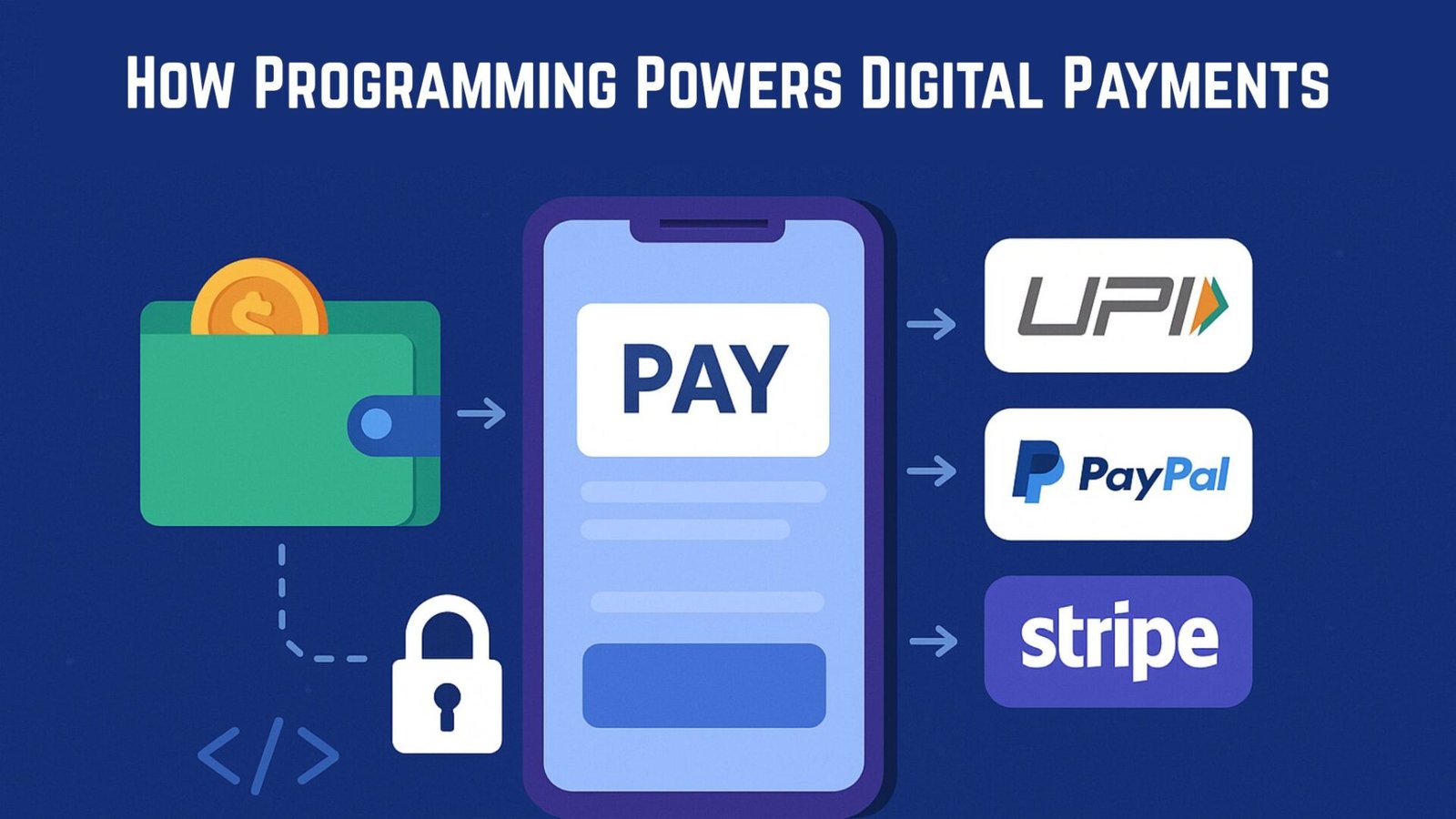Picture yourself enjoying a cup of coffee while seated in a café. Instead of fumbling for cash when the waiter brings your bill, you pull out your phone, scan a QR code, and presto! The payment is completed. The funds arrive in the merchant’s account in a matter of seconds.
You know how it feels, magical? However, thousands of lines of code are hidden behind this seamless experience. The unseen force behind the smooth operation of UPI, PayPal, Stripe, and innumerable other digital payment systems is programming.
1. The Backbone of Digital Payments: Code
Code is the first step in every tap-to-pay scenario. To create safe payment gateways, developers utilize programming languages like Java, Python, C++, and JavaScript.
Backend Logic: Processes payments, checks balances, and maintains user accounts.
Frontend UI: Makes sure the application is responsive, looks good, and facilitates transactions.
Application Programming Interfaces, or APIs, are what link retailers to payment networks (such as Stripe or UPI APIs).
Payment platforms would simply be static webpages without programming.
2. Security: Protecting Your Money With Code
Have you ever questioned why you give your hard-earned money to PayPal or UPI? reliability.
- Encryption: Cryptographic algorithms are used to encrypt sensitive data, such as passwords and card numbers.
- Two-Factor Authentication (2FA): Provides an additional degree of protection; consider biometric authentication or one-time passwords.
- Fraud Detection Algorithms: Machine learning stops possible fraud by identifying odd transactions.
Programming makes sure that your money is transferred over the internet securely and without being intercepted.
3. Real-Time Transactions: The Magic of APIs & Servers
A series of events starts when you send money using UPI:
- The payment processor receives a request from your bank’s API.
- The processor interacts with the appropriate bank networks or NPCI (for UPI).
- The transaction is instantly reflected and confirmed by the system.
Thanks to high-performance servers and optimized code, all of this occurs in milliseconds.
In the same way, developers incorporate REST APIs and SDKs into websites and applications to use PayPal and Stripe. This enables companies all over the world to take payments using a few lines of code.
4. Programming + AI = Smarter Payments
Artificial intelligence and machine learning are used by modern payment platforms to improve the intelligence of transactions:
- Identifying and stopping fraud.
- Making recommendations for individualized payments.
- Studying consumer spending patterns to improve user experience.
For instance, Stripe automatically retries transactions that fail based on machine learning.
5. The Future: How Coding Will Evolve Digital Payments
We are about to enter a world in which:
- Payments will become even more decentralized and transparent thanks to blockchain technology and smart contracts.
- IoT and voice-based payments (such as using a smartwatch or Alexa) will grow in popularity.
- Better programming frameworks will make cross-border transactions faster and less expensive.
Conclusion: Code is the Currency of Digital Payments
Stripe, PayPal, and UPI wouldn’t exist without programming. Thousands of lines of code support every seamless transaction you make, guaranteeing scalability, security, and speed.
The future of money is being shaped by digital payment systems, so if you’re a developer or an aspiring programmer, now is the time to learn how they operate.
- I Tried ChromeOS Flex After Switching From Windows 10 - October 13, 2025
- Top 5 Business Skills Every Programmer Needs to Get Hired (2025 Guide) - August 27, 2025
- Intel’s Downfall? How a Silicon Titan Lost the Plot—and What Comes Next - August 26, 2025


